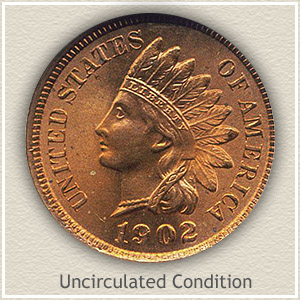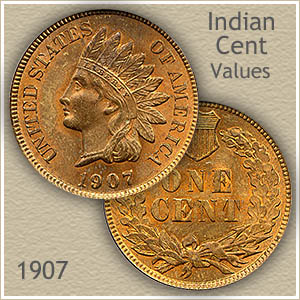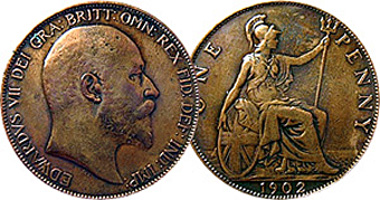1902 Penny
- 1902 Penny United States
- 1902 Penny Indian Head
- 1902 Penny Us Coin Value
- 1902 Penny Value Today
- 1902 Penny
Indian Head Penny Overview
Penny 1902 Low Tide Freeman 156 dies 1+A UNC with practically full lustre, in a PCGS holder and graded MS64 RB: £190 Auction 163: English Coins: Lot 789: Penny 1902 Low Tide Freeman 156 dies 1+A UNC with around 40% lustre, a very pleasing example, the reverse fully struck: £95. 1902 Penny Lake Dr, Wallis, TX is currently not for sale. Single-family home is a 3 bed, 2.0 bath property. This home was built in 2015 and last sold on for. View more property details, sales history and Zestimate data on Zillow. Penny Values Rare Pennies Have Outstanding Values. Values listed for cents. From the earliest Half and Large cents, to Indian head pennies to the popular Wheat cents of 1909 to 1958. Match you coins to the grading images and value charts. Some of these old pennies have amazing values.
Sporting a classic and extremely influential design, the Indian Head penny was minted during one of the most important eras of American history and is a cornerstone of contemporary numismatics.
1859 was the first year of mintage for the Indian Head penny. As the successor to the Flying Eagle penny, it was only the second small cent to be struck in the U.S. Both coins were designed by Chief Engraver James B. Longacre.

Longacre’s design, which would go on to influence the appearance of countless coins in the coming decades, features a profile bust portrait of Liberty in a feathered headdress, the inspiration for the name “Indian Head penny.”
Along the rim is the legend “UNITED STATES OF AMERICA,” and at the bottom is the year of mintage.
The reverse has the denomination “ONE CENT” in the center encircled by a wreath. In 1859, the first issue, the wreath was composed of laurel. All later issues have an oak wreath instead with a shield at the top and a bundle of arrows at the base.
The composition of the coin also evolved over time. The first composition is found in coins minted between 1859 and 1864 and consists of 88% copper and 12% nickel. Coins of this composition have a mass of 4.67 grams.
1902 Penny United States
The second composition was used from 1865 to 1909 and was 95% copper and 5% tin and zinc. These coins have a mass of 3.11 grams.
1909 was both the last year of the Indian Head penny and the first year for its successor, Victor David Brenner’s Wheat penny, the first Lincoln cent.
1902 Penny Indian Head
History of the 1902 Indian Head Penny
1902, a late mintage for the series, was one of the largest mintages in the 50-year history of the Indian Head penny, coming in at a total of 87,374,704 pennies struck.
All of these were produced at Philadelphia, so no mint mark will be seen on this issue.
Thanks to their high mintage, these coins are relatively common across all grades and can usually be found quite easily–a fact that is fortunate for the buyer and unfortunate for the seller, as this means that values tend to be low.
Also unfortunate is the fact that many of these coins show weak strikes with a particular weakness near the top of the reverse.
Only a few minor varieties have been identified for this issue, and they have not garnered much attention from collectors and do not typically carry extra premiums.
As these coins were minted after 1864, they are made of a bronze composite and include the “L” initial on the ribbon below the final feather on the obverse portrait.

Longacre Doubling
Any collector interested in Indian Head cents is likely to encounter Longacre doubling sooner or later.
A feature found on all coins designed under James Longacre but most often associated with the Indian Head penny, Longacre doubling is sometimes mistaken for a doubled die variety by beginning collectors.
A true doubled die is produced when a die shifts during the hubbing process, creating a doubled design that is found on all coins struck by that die.
Longacre doubling, on the other other hand, was the result of deliberate modifications made to the master die that may have been intended to make it easier to obtain a full strike.

The exact cause is not known, but Longacre doubling is not viewed as a true variety and thus does not impart any extra value to a coin exhibiting this phenomenon. One way to tell if your coin is showing Longacre doubling instead of a doubled die is if the doubling appears on both sides of the design elements.
Any doubling seen on an Indian Head penny is most likely Longacre doubling, but doubled die varieties do exist. If you think you may have a true doubled die coin, consider having it authenticated by a coin-grading service.
Example of Longacre doubling seen on obverse lettering. Image source: http://www.error-ref.com/longacre-s-doubling/
Valuing the 1902 Indian Head penny
Although this issue tends to have low values in average grades, higher Mint State specimens can bring some nice premiums, especially if they display a Full Red color.
Good-4 to Very Good-8 grades are worth between $2 and $3. Fine-12 examples are worth $4.64, and Very Fine-20 examples are valued at $6. This is the range of values for the average specimen.
The value increases to $10 in Extremely Fine-40, $21 in About Uncirculated-50, $38 in Uncirculated MS-60, and $57 in Uncirculated MS-63. MS-64 examples carry a value of $90; MS-65 examples, $160; MS-66 examples, $340.
Proof strikes are generally worth around $144.
An important factor that can impact the value of your Indian Head cent is its color. These coins may be classified as Brown, Red-Brown, or Full Red, the latter being the most desired and most valuable.
Full Red or even Red-Brown color designation can greatly raise the value of your coin. For example, the MS-64 value of $90 is for a Brown coin. The same grade in Red-Brown is worth $140; in Full Red, the same coin commands a value of $260.

CoinTrackers.com has estimated the 1902 Indian Head Penny value at an average of $2.50, one in certified mint state (MS+) could be worth $55. (see details)...
Type:Indian Head Penny
Year:1902
Mint Mark: No mint mark
Face Value: 0.01 USD
Total Produced: 87,374,000 [?]
Silver Content: 0%
Numismatic Value: $2.50 to $55.00
Value: As a rough estimate of this coins value you can assume this coin in average condition will be valued at somewhere around $2.50, while one in certified mint state (MS+) condition could bring as much as $55 at auction. This price does not reference any standard coin grading scale. So when we say average, we mean in a similar condition to other coins issued in 1902, and mint state meaning it is certified MS+ by one of the top coin grading companies. [?].
Additional Info: This coin was designed by James Barton Longacre, Head Engraver at mint.
More of the Same
All US Pennies 1859 to 2021
Most Valuable Coins by Type...
1902 Penny Us Coin Value
[Top of Page]
**When we say that 87,374,000, of these coins were produced or minted in 1902 this number doesn't always match the actual circulation count for this coin. The numbers come from the United States mint, and they don't reflect coins that have been melted, destroyed, or those that have never been released. Please keep that in mind.
[Top of Page]
***Price subject to standard supply and demand laws, dealer premiums, and other market variations. Prices represent past values fetched at online auctions, estate sales, certified coins being sold by dealers, and user submitted values. While we wholeheartedly try to give honest price estimates there are many factors besides appearance, metal content, and rarity that help make up the coins overall value.Call or visit your local coin dealer for more information.
1902 Penny Value Today
We use user submitted pictures please read that article if you are interested in adding your own.
1902 Penny
[Top of Page]